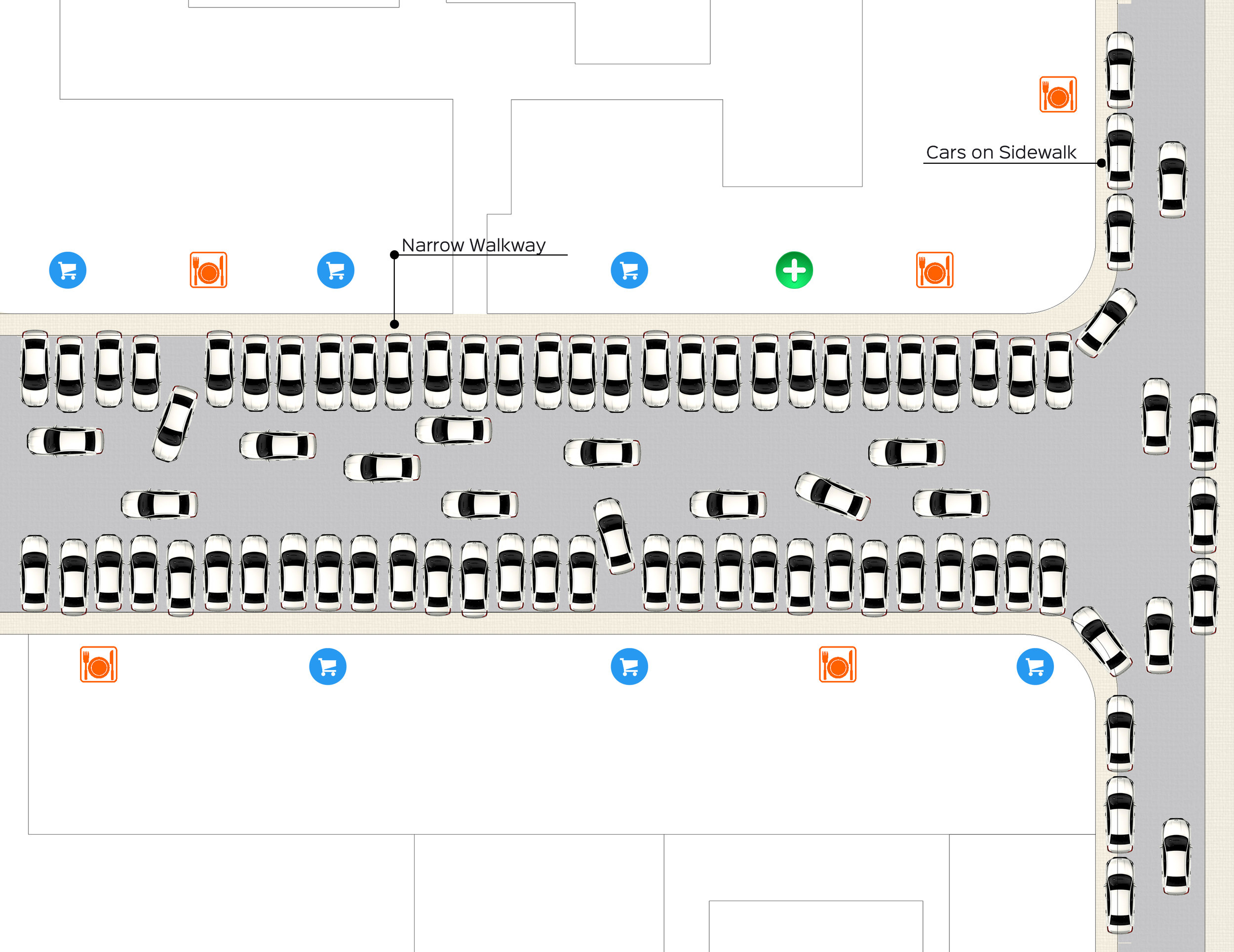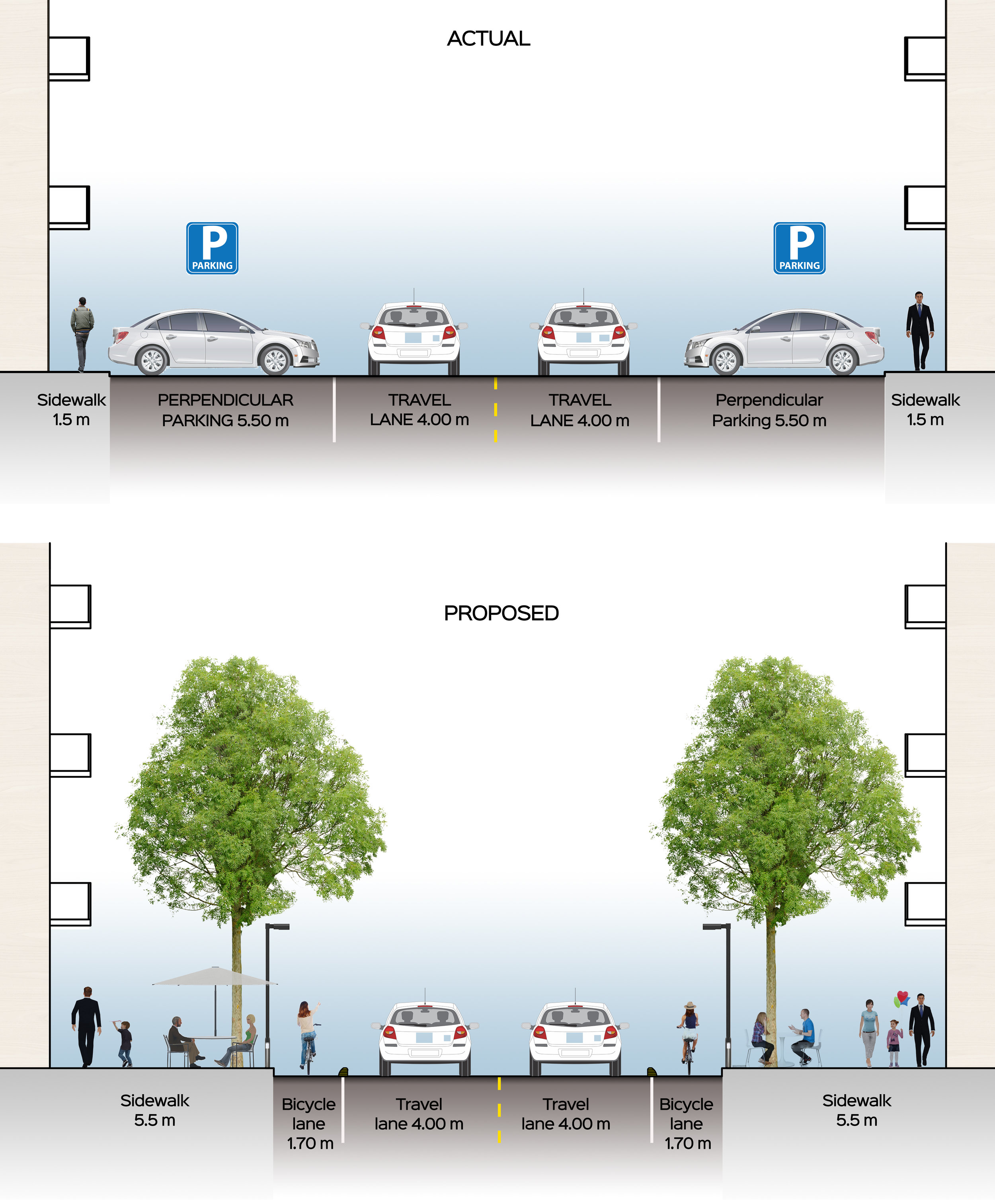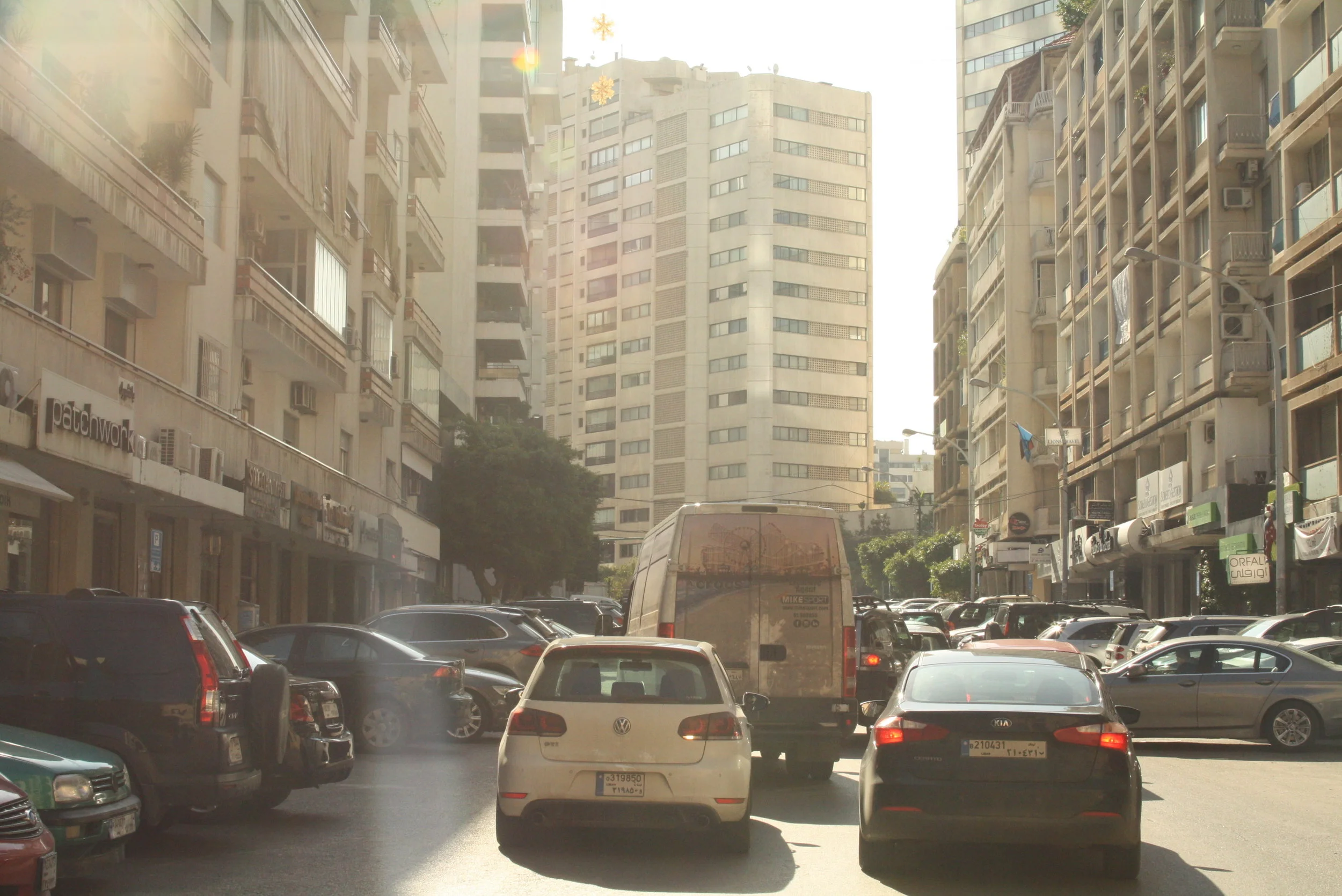VISIONS PROJECT
Sodeco street Rehabilitation
Studying the main activity of the street on a 12 month basis showed that 4 out of 6 restaurants were shut down for financial reasons and one of them was occupied by new owners and did not last for 5 month. Something inappropriate in a district that hosts more than 10.000 regular people between the habitants and the employees.
In the typology of the Sodeco main street; the ground floor in all the buildings host commercial shops and many restaurants, whereas the upper floors are mixed between offices and residential buildings.
The ground floor levels of the 130m long street has 6 restaurants, 12 shops, 2 offices and a pharmacy, which makes it a relatively busy street that should have too much financial potential. Recently, a 50 story tower is being built at the end of the street, holding offices and residential spaces; this will boost the activity of the street even more.
The space occupied by the cars is 8 times greater than the one occupied by pedestrians, which leaves the people walking on a <1.5m sidewalk, with obstacles such as park meters, garbage cans, lamp posts, electricity boxes: all of which prevent pedestrians from walking easily.
The amount of asphalt extend on a width of nearly 20m, with no zebra pedestrian crossing paths nor red lights, which makes it unpractical for a pedestrian to cross from an end to another.
Urban Intervention
The main question is: how to give the street back to pedestrians and how to make use of it financially?
In a country where the sun shines 9 month a year, outdoor activities should be widely taken into consideration.
- Extending the restaurants to the outside with a service and open-air seating would attract employees in their lunch break to change from the work environment and have lunch or a drink outside with friends. This would boost the revenues of the restaurant and make the street busy.
Many restaurants in lower parts of Beirut proved that the few tables that they have outside are much more occupied than the ones inside.
- Conception of public seating with benches and chairs where people could sit and enjoy a book or use electronic devices.
- Adding bicycle lanes Residents would get to their destinations way faster than being stuck in the traffic jam caused in this street. That could also boost the use of the public bicycles provided by the Beirut municipality which are being nearly unused because of a dangerous street planning. This will reduce CO2 emissions and lead the city to a greener one.
-Sidewalk connections if the strategy is applied to neighbor streets, the same principle of the bicycle will be applied but by walking rather than taking the car for minimal distances.
-Addition of urban road elements such as zebra crossing lanes and red lights.
-Handicapped and blind friendly Adding ramps where needed and embossed road patterns to follow.
The extension can be made when relocating the 98 cars into an underground level that has the same boundaries as the road above.
Unethical strategies to reduce cars
There are some unethical ways to reduce the numbers of cars to push people to use public transportation or walk, by elongating the time of their car journey:
-Adding traffic lights: The average waiting time on a pedestrian red light is 12 seconds, and on a cross street is 50 seconds. By adding red lights on every car (or bicycle) intersection and on every chunk of a straight road for pedestrians. Therefore the driver will spend more time in his car and reconsider his mean of transportation.
-Reduce the speed limit in internal roads to 20km/h. With the extension of the pedestrian walkways, more people than cars would be dominating the streetscape. The car needs 4 seconds to reduce its speed to 0km/h if it is rolling on a 50km/hour speed. This will create danger to pedestrian’s crossings the street on a zebra lane, reducing the speed to 20km/h is a must.
-Remove one car lane and dedicate it to public transportation on every secondary street that has more than 2 lanes. A special lane will be dedicated to Public transportation, ambulances and Police cars. In that way, traveling by public transportation will get you to your destination quicker, cheaper, and reduce CO2 emissions in the city.
-Adding pedestrian zebra crossways: With the rise of numbers of pedestrians, additional zebra crossways will be demanded; the driver is required to stop the car completely when in interaction with the crosser.
-Reduce Parking spots: One of the main reasons in some European cities where people do not get a car is because is it hard to find parking spots. There is no possible explanation to choose the car over the public transportation if the parking spot is further than the drop off area of the bus or metro.
-Prioritize crossroads to bicycles and pedestrians with new laws: By adding a severe fine to driver that do not stop in time, and prioritize the access to bicycles when in contact with a car at intersection points.
Actual photography




